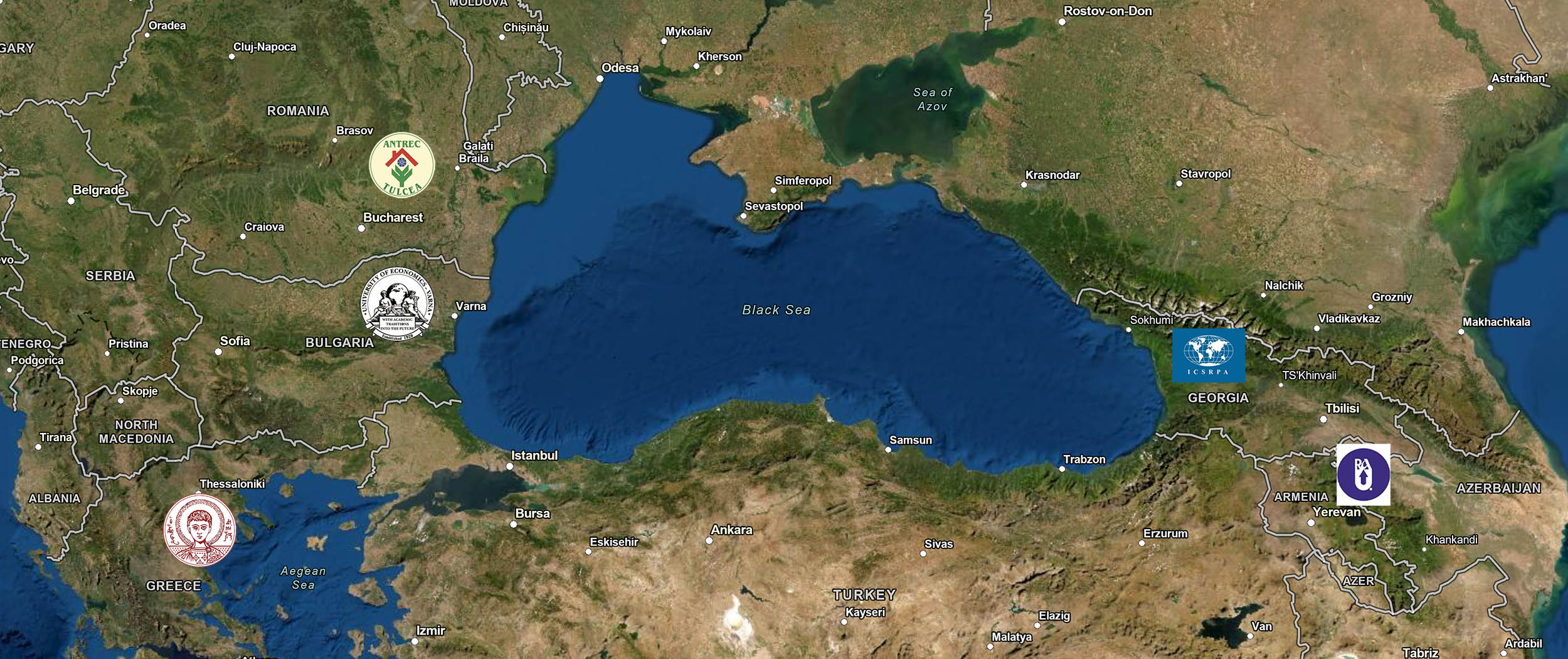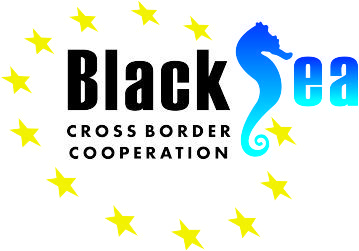JOINT OPERATIONAL PROGRAMME - BLACK SEA BASIN 2014-2020
Silk Road Local Culture – SILC
Project: Joint Operational Programme Black Sea Basin 2014-2020
Subsidy Contract No. 99372/31-08-2018
Historically, the Silk Road served as a bridge between East and West, uniting different cultures along its routes. Acclaimed as the "greatest route in the history of mankind" the ancient Silk Road has been an important vehicle for trade between ancient empires of China, India, Persia and Rome, through a complex network of overland and sea routes. The historic Silk Road route was a channel for communication among people and cultures, inspiring the exchange of goods, know-how, technology, religion and ideas on art, science and philosophy, in what is considered to be the "greatest cultural exchange in the history of mankind".
With its rich and diverse cultural heritage, and its wealth of nature tourism attractions, the Silk Road today offers visitors the opportunity to experience a unique network of heritage destinations, following the footsteps of some of the world’s most acclaimed explorers, such as Alexander the Great and Marco Polo[1]. Nowadays, the Silk Road is a rich tapestry of tourism destinations and products based on the unique and outstandingly rich heritage, nature, and traditions of dozens of distinct histories, peoples and cultures, all along the timeless route now extending a warm welcome to visitors. Therefore, the historic Silk Road revives again as an up-and-coming cultural tourism destination, engaging numerous countries, with rich natural and cultural heritage. The revival of the Silk Road in its modern perspective encompasses and encourages the creation of new tourism flows of independent travelers, seeking to experience diverse cultures and alternative forms of tourism, detouring from the mass-tourism scheme.
The Silk Road Local Culture-SILC Project focuses on the Silk Road cultural networking in the Black Sea Basin Region, a Region with rich cultural heritage. The output of the project will be the result of the collaboration between the SILC partners, namely:
- Aristotle University of Thessaloniki, Research Committee – Special Account for Research Funds, School of Economic Sciences, LP, AUTh
- State Educational Institution of Higher Professional Education “Russian-Armenian University”, PP2, RAU
- University of Economics – Varna, PP3, UE-Varna
- International Centre for Social Research and Policy Analysis, PP4, ICSRPA
- National Association for Rural, Ecological and Cultural Tourism, Tulcea Branch, PP5, A.N.T.R.E.C. Branch Tulcea
The Black Sea Basin, as well as the SILC project study areas, at the crossroad of civilizations, share a rich and diverse cultural heritage and retain strong cultural assets in various nodes that need to be preserved. Several regional tangible and intangible cultural assets have been additionally listed as the heritage of humanity, and this wealth of cultural variety offers considerable opportunities for interregional cooperation.
In this line the SILC project follows existing policies and strategies that concern the intervention area. In particular, two countries of the proposed project, Bulgaria and Rοmania, are part of the Danube Macro Region. In this strategy the project is combined with the first pillar about Culture and Tourism, a comparative advantage for the Macro Region.
Also, another framework that embraces the SILC project is the Eastern Partnership of the European Neighborhood. It is the most important strategy, specifically concerning the area of intervention of the SILC project. It includes strengthening EU relations (including the SILC project partners Greece, Bulgaria and Rοmania) with Eastern Partnership countries (including the SILC project partners Armenia and Georgia). “Improving the business environment of regions and cities, interconnectivity, mobility and people-to-people contacts” open new prospects for cooperation and are the key priorities of both the Strategy and the SILC project, that will be achieved through the tourism utilization on the Silk Road Destinations.
Finally, the SILC project deals with tourism. Tourism potential in the Black Sea Basin area is rich and diversified. Even though comprehensive regional data is limited, it appears that the number of international visitors to the Black Sea Basin eligible area has expanded. Continued expansion and diversification of tourism over the past decades in the Black Sea Basin area means that tourism has become one of the largest and fastest-growing economic sectors in the area and it is still expected to increase considerably in the coming years. Therefore, with the implementation of the SILC project and the development of a new cultural tourism product, complementarities within this regional cooperation may be generated and one territorial challenge could be solved.
Moreover, the SILC project is coherent with the following synergies:
Western Silk Road Initiative UNWTO / EU: The United Nations World Tourism Organization (UNWTO) launched in 1993 the Silk Road Programme, a collaborative initiative designed to enhance sustainable tourism development along the historic Silk Road route, aiming to maximize the benefits of tourism development for local Silk Road communities, while stimulating investment and promoting the conservation of the route's natural and cultural heritage. In 2016, the UNWTO in collaboration with the European Union (EU) launched the Western Silk Road (WSR) Tourism Development Initiative, a joint tourism project, a key segment of the Silk Road Programme. The WSR Initiative aims at revitalizing the Silk Road heritage located in the European region, from the Caspian Sea, around the Black Sea and along parts of the Mediterranean basin.
Silk Road Heritage Corridors Tourism Strategy Project UNWTO / UNESCO: On 2014, the World Heritage Committee inscribed a section of the Silk Roads network submitted by Kyrgyzstan, China and Kazakhstan on the World Heritage List. United Nations World Tourism Organization (UNWTO) and United Nations Educational, Scientific and Cultural Organization (UNESCO), together with heritage and tourism experts from the five participating countries, are developing a comprehensive and sustainable Silk Roads Heritage Corridors Tourism Strategy focusing on two heritage corridors crossing five countries: China, Kazakhstan, Kyrgyzstan, Tajikistan and Uzbekistan. The joint UNESCO/UNWTO strategy, which addresses the overarching principles of sustainable growth, community development, heritage management and conservation, follows years of ground-breaking research carried out by UNESCO, the International Council on Monuments and Sites (ICOMOS) and University College London (UCL).
Silk Road Bloggers Ch@llenge 2012 UNWTO / WTM: On September 2013, the Republic of Armenia, hosted the winners of the Silk Road Bloggers Ch@allenge, an international event designed to enhance the online and social media presence of the Silk Road by engaging top-travel bloggers in a competition to create the best online travel blog on the Silk Road.
Black Sea Network for Sustainable Tourism BS NTS - Strategies for joint tourism marketing and development in the Black Sea region: The project is aiming to achieve a stronger regional partnership and cooperation among regions in the Black Sea Basin for sustainable tourism management and joint marketing strategy. The partnership consortium is consisted by partners from Georgia, Greece, Bulgaria, Ukraine, Republic of Moldova and Turkey.
The Joint Operational Programme Black Sea Basin 2014-2020
The Project “SILC – Silk Road Local Culture” is included in the Joint Operational Programme Black Sea Basin 2014-2020, an important programme under the Black Sea Basin Programme 2014-2020 as part of European Union’s Cross-Border Cooperation (CBC) under its European Neighbourhood Instrument (ENPI) 2014-2020 - Programming document for EU support to ENI Cross-Border Cooperation (2014-2020).
The Program’s wider objective is to “improve the welfare of the people in the Black Sea Basin regions through sustainable growth and joint environmental protection”. Its goal is to establish long-lasting interregional links within the Black Sea Basin by financing projects which should deliver clear interregional cooperation impact and benefits, and which demonstrate sustainability of their actions, synergies and complementarities with other actions in the same field.
According to ENI CBC programming document, the program includes six ENI CBC ‘Common Output Indicators’ (COI), developed in order to increase accountability and facilitate reporting progress at instrument level. The achievement of the indicators will be monitored permanently based on the values reported by beneficiaries. The program indicators and their baseline and target values are reflected in Table 1 below:




